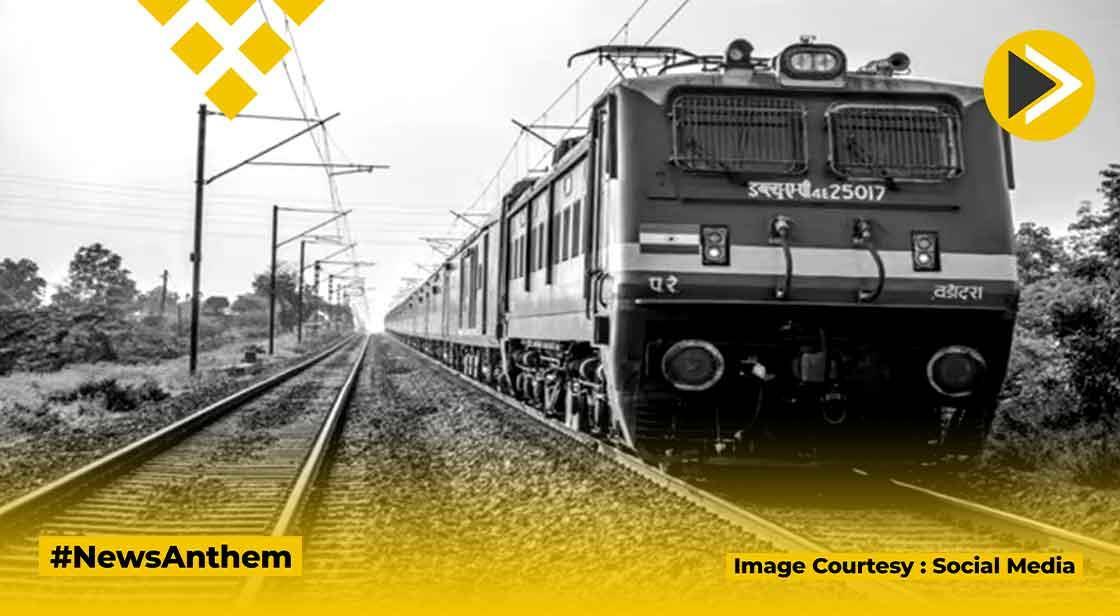Indian Railways Implements Major Changes for Waiting List Passengers, Refunds, and Ticket Bookings

News Synopsis
In a bid to enhance comfort, transparency, and efficiency in rail travel, the Indian Railways has rolled out a set of new rules applicable from May 1, 2024. These changes are set to impact ticket booking, refund processing, and onboard travel policies for millions of passengers.
New Rules for Waiting List Ticket Holders
No Entry into Reserved Coaches Without Confirmation
A major change impacts passengers with unconfirmed or waiting list tickets. Such travellers will no longer be permitted to board sleeper or AC coaches.
“Passengers with waiting list tickets will not be allowed to travel in sleeper and AC coaches,” reads the official notification.
Penalties for Unauthorized Travel
Those found occupying reserved seats with unconfirmed tickets will face strict action.
“Those found with an unconfirmed ticket occupying a seat in reserved coaches, will be asked to vacate the same by the TTE and a heavy fine would be imposed on that person before being asked to move to the general (UR) coaches,” Indian Railways has stated.
The objective behind this change is to maintain comfort and convenience for passengers holding confirmed reservations.
IRCTC Introduces OTP Verification for Ticket Bookings
To enhance the security of online bookings, Indian Railways has made OTP-based verification mandatory for every booking done through the IRCTC website or mobile app.
“Registered users or otherwise, every ticket booked via the IRCTC portal and app will now make use of OTPs,” the update says.
This added layer of authentication ensures only genuine bookings make it through to the payment gateway.
Advance Booking Window Reduced to 90 Days
In another major shift, the Indian Railways has reduced the advance booking period. Now, train tickets can be booked only up to 90 days before the journey date.
Earlier, bookings were allowed up to 120 days in advance. This step is aimed at curbing the misuse of the system by travel agents.
“This change is a precautionary measure to prevent travel agents from exploiting the earlier system.”
Faster Refund Process for Cancelled Tickets
The ticket cancellation refund window has also been revised to speed up the process.
“In case a train ticket is cancelled, the refund process will be completed within two days,” says the Railways.
Previously, passengers had to wait five to seven days. The new refund rule will apply to both online bookings and counter bookings linked directly to bank accounts.
Conclusion
With these new changes effective from May 1, Indian Railways is clearly focused on improving the travel experience by ensuring greater discipline, faster processes, and enhanced booking security. While the restriction on waitlisted passengers in reserved coaches may come as an inconvenience to some, it reflects the Railways' commitment to providing comfort to those who pay for confirmed seats. Meanwhile, quicker refunds and secure booking methods mark a welcome step toward a more modern and efficient system.
History of Indian Railways
The history of Indian Railways is a long and fascinating one, stretching back over 170 years.1 Here's a look at its key milestones and development:
The Early Days (1832-1853):
-
First Proposals (1832): The initial idea for railways in India was suggested in Madras (now Chennai), primarily by the British government, to facilitate trade and transport raw materials like cotton and tea.2 However, these plans didn't immediately materialize.
-
Early Lines (1837-1851): Several short, experimental, and industrial railway lines were constructed before the first passenger line. These included:
-
Red Hill Railway (Madras, 1837): India's first operational railway, used for transporting granite for road construction.
-
Godavari Dam Construction Railway (Dowleswaram, 1845): Built by Sir Arthur Cotton to supply stone for dam construction.3
-
Solani Aqueduct Railway (Roorkee, 1851): Used a steam locomotive named Thomason for transporting materials for an aqueduct.
-
-
The Dawn of Passenger Railways (1853): The landmark event in Indian Railways history occurred on April 16, 1853. The first passenger train in India ran a distance of 34 km (21 miles) between Bori Bunder (Bombay) and Thane.4 The 14-carriage train was hauled by three steam locomotives named Sahib, Sindh, and Sultan, carrying around 400 people.5 This line was built and operated by the Great Indian Peninsula Railway (GIPR). This day is commemorated annually as Indian Railways Day.
Expansion Under British Rule (1853-1947):
-
Rapid Network Growth: Following the success of the first passenger line, railway networks began to expand rapidly across the country, driven by the British administration's need for efficient transport for trade, military purposes, and administration.
-
Key Early Routes:
-
1854: Howrah to Hooghly (Eastern India's first passenger line).6
-
1856: Madras to Arcot (South India's first passenger line).
-
1864: Delhi to Calcutta, connecting northern and eastern India.
-
1867: Allahabad to Jabalpur.
-
-
Private Companies and the "Guarantee System": Initially, railway construction was largely undertaken by private British companies under a "guarantee system" where the government provided free land and guaranteed a certain rate of return on their investment. Several railway companies were established, including the East Indian Railway, Madras Railway, and Bombay, Baroda and Central India Railway.
-
Famine Relief and Economic Growth: The railways played a crucial role in transporting food and aid during famines in the late 19th century. They also facilitated economic growth by connecting major port cities and enabling the movement of goods and raw materials.
-
Development of Infrastructure: This period saw the construction of significant infrastructure, including railway bridges (like the Thane viaducts) and the establishment of the first railway workshops (e.g., Jamalpur Workshop in 1862).
-
Early Manufacturing: While initially relying on imported locomotives and parts, India began manufacturing its own locomotives by the late 19th century, with the first indigenously built steam locomotive in 1877 at the Ajmer Workshop.
Electrification and Further Expansion (1925-1947):
-
The Dawn of Electric Traction (1925): The first electric train in India ran between Bombay Victoria Terminus (now Chhatrapati Shivaji Maharaj Terminus) and Kurla. This marked a shift towards modernizing the railway infrastructure.
-
Expansion of Electrified Networks: Suburban sections in major cities like Bombay and Madras saw early electrification.
-
The First Railway Budget (1924): A separate railway budget was presented for the first time, highlighting the growing importance of the railway network.
-
Government Intervention and Centralization: Towards the mid-20th century, the government's role in railway management increased, eventually leading to nationalization.
Post-Independence Era (1947-2000):
-
Nationalization (1951): After India's independence, the numerous private railway companies were gradually amalgamated into a single state-owned entity named Indian Railways under the Railways Act of 1951. The network was reorganized into regional zones for administrative efficiency.
-
Modernization and Technological Advancements: This period saw the introduction of diesel and electric locomotives, gradually phasing out steam engines.
-
Introduction of Key Passenger Services: Iconic trains like the Rajdhani Express (India's first superfast train in 1969) were introduced, setting new standards for speed and comfort.
-
Computerization: Computerized ticketing and reservation systems were introduced in the 1980s, revolutionizing passenger convenience.
Modernization and the High-Speed Era (2000-Present):
-
Online Booking (2002): The launch of the IRCTC website for online ticket booking made travel planning significantly easier.
-
Metro Systems: The development of metro systems in major cities like Kolkata, Delhi, Bangalore, and Mumbai provided crucial urban transport solutions.
-
High-Speed Rail: India is now actively pursuing high-speed rail projects, with the Mumbai-Ahmedabad Bullet Train project being a significant initiative.
-
Focus on Electrification: Indian Railways is committed to achieving 100% electrification of its broad gauge network to reduce carbon emissions and enhance efficiency.
-
Infrastructure Development: Massive investments are being made in upgrading infrastructure, including new lines, doubling and tripling of existing lines, modernizing stations, and constructing dedicated freight corridors.
-
New Generation Trains: Introduction of modern train sets like Vande Bharat Express, Vande Metro, and Amrit Bharat Express are enhancing passenger experience.
Today, Indian Railways is one of the world's largest railway networks, playing a vital role in the country's economy and connecting its diverse population. Its journey from a short colonial-era line to a vast, modern network is a testament to its enduring importance in India's history and development.
You May Like









